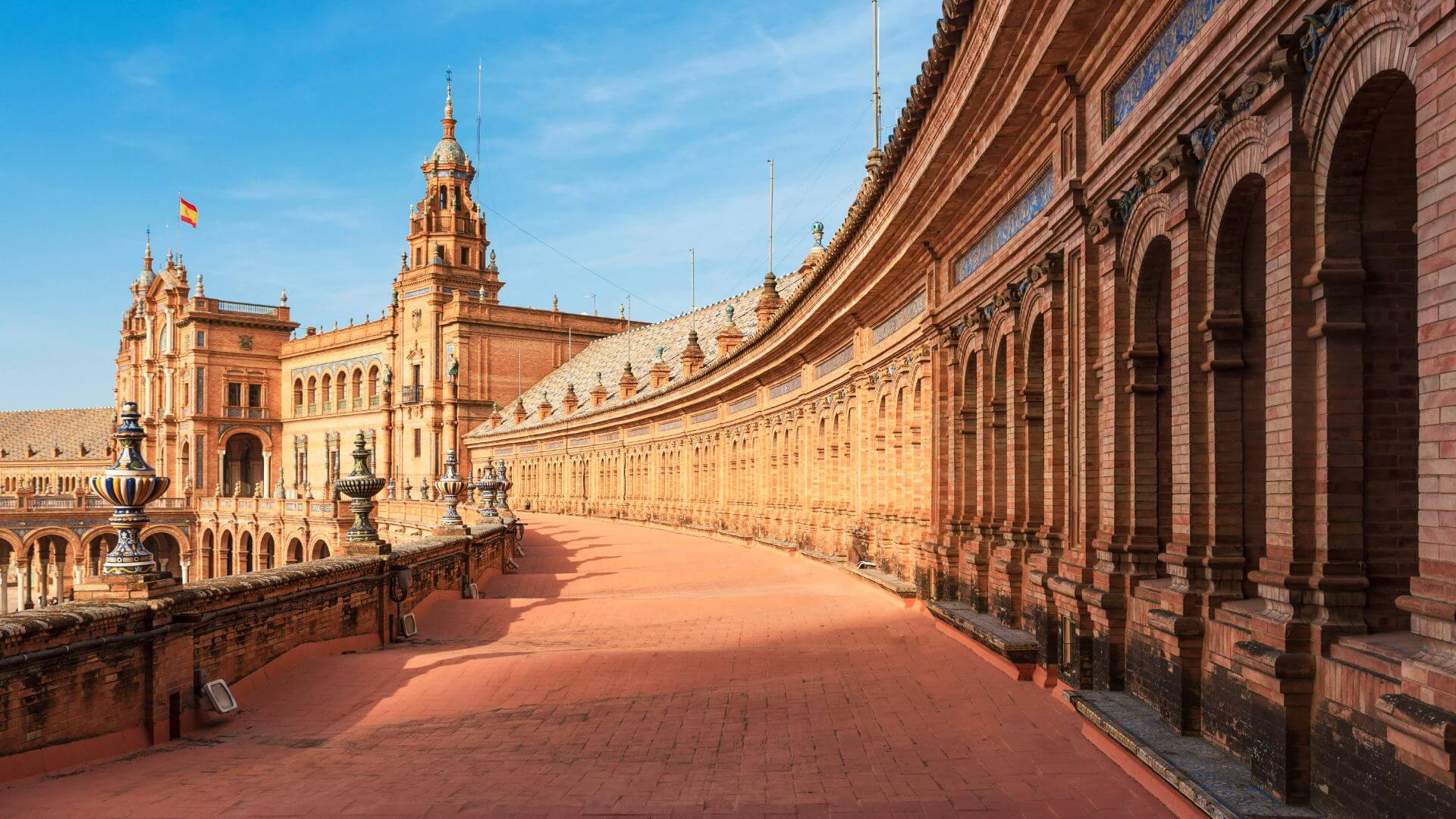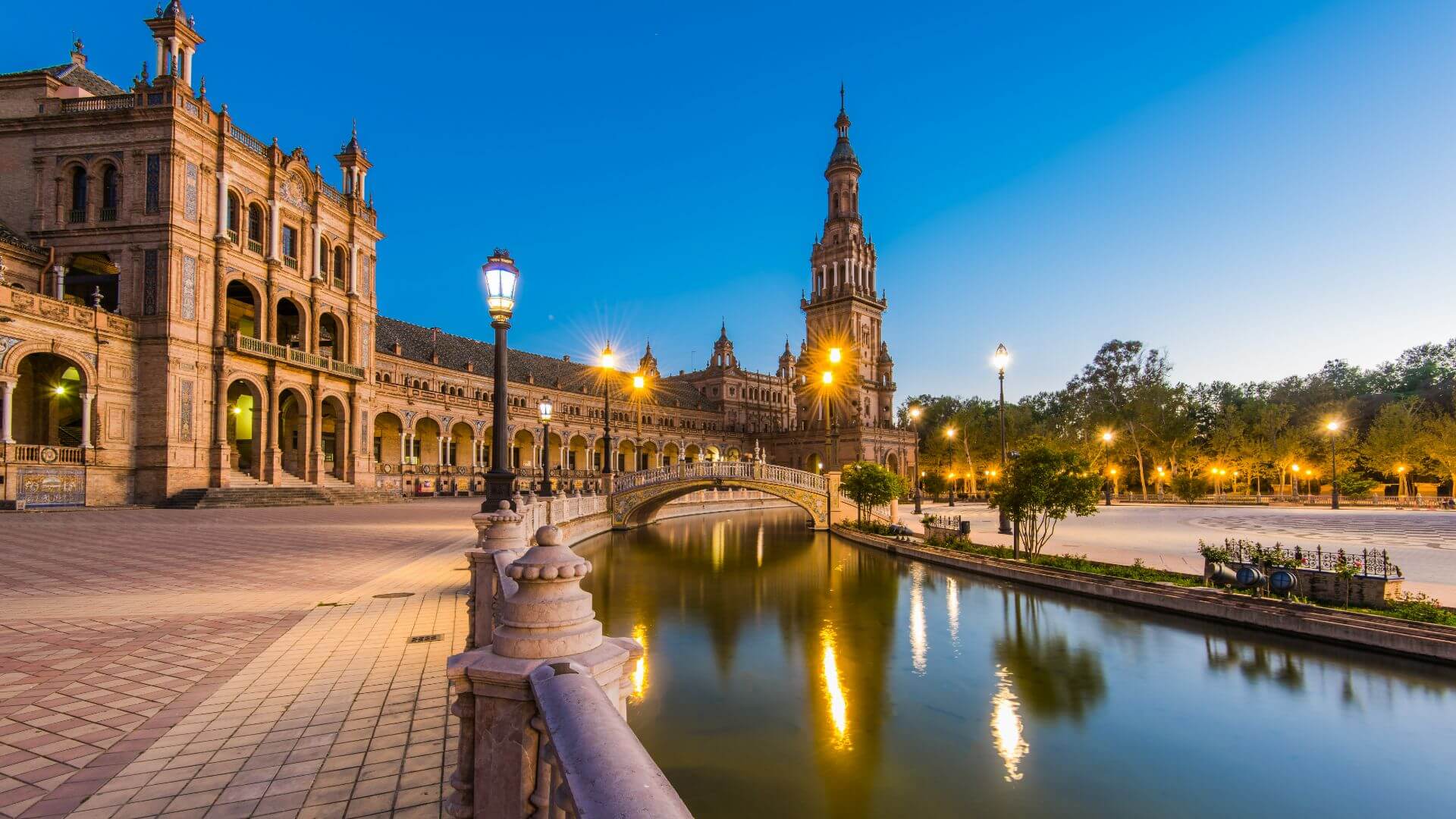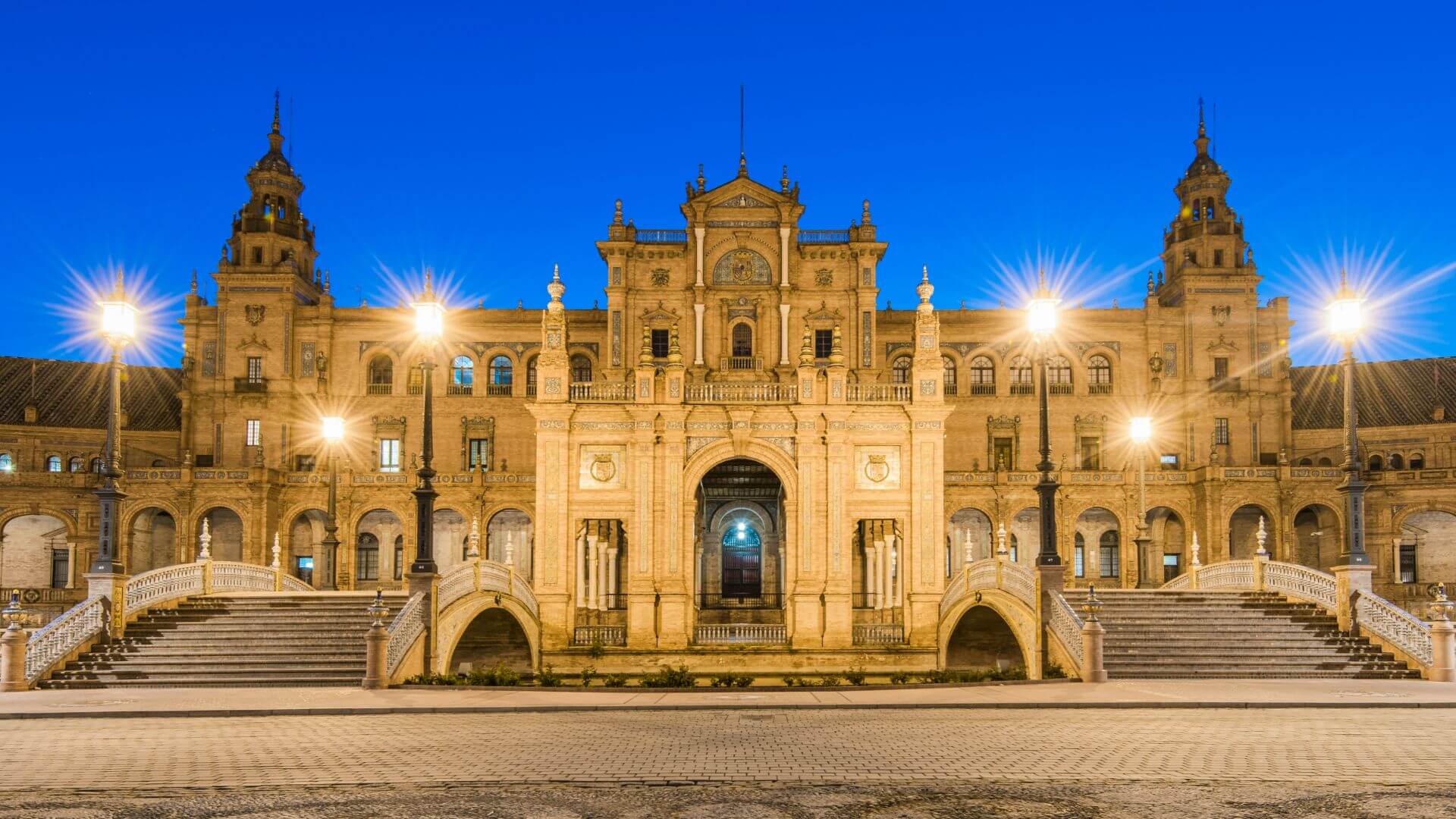Discover the enchanting Plaza de España in Seville, a marvel of Spanish architecture and a vivid representation of the country’s diverse cultural tapestry. Nestled in the heart of Maria Luisa Park, this architectural gem was built for the 1929 Ibero-American Exposition and continues to captivate visitors with its stunning beauty and historical significance. In this article, we explore the unique aspects of Plaza de España, from its iconic semi-circular design and tiled alcoves to the serene canal that winds through it, offering an immersive experience of Spanish history and art.
Plaza de España: A Cinematic Landmark in Star Wars
Plaza de España in Seville has not only been a beacon of cultural and architectural significance but has also achieved fame on the silver screen, most notably in the Star Wars universe. This iconic location was transformed into the city of Theed on the planet Naboo in “Star Wars: Episode II – Attack of the Clones”. Fans of the franchise will recognize the Plaza’s semi-circular architecture and central building as the backdrop for key scenes involving Anakin Skywalker and Padmé Amidala. This cinematic recognition has added a layer of modern pop culture appeal to the Plaza, drawing Star Wars enthusiasts from around the world eager to walk in the footsteps of their favorite characters.

The Impact of Star Wars on Plaza de España’s Global Recognition
The inclusion of Plaza de España in the Star Wars saga has significantly boosted its global recognition, marking it as a pilgrimage site for fans of the series. Visitors often reenact scenes from the movie, adding a playful and imaginative dimension to their experience of the historic site. This intersection of film and history illustrates the plaza’s versatility as a landmark – it’s not just a testament to Spain’s architectural past but also a part of contemporary storytelling that continues to capture the imagination of audiences worldwide. For many, a visit to the Plaza de España is not just about appreciating its historical and architectural significance but also about connecting with a beloved moment in cinematic history.
The Architectural Elegance of Plaza de España
Plaza de España, a semi-circular complex adorned with intricately detailed buildings, bridges, and a central fountain, is a testament to Spain’s regional diversity and architectural brilliance. The main keyword, Plaza de España, is synonymous with the grandeur of Spanish architecture and the cultural unity it represents.
Designed by architect Aníbal González, the plaza is a stunning example of Renaissance Revival style in Spanish architecture, with elements of Moorish Revival. The most striking features are the tiled alcoves along the walls, each representing a different province of Spain, showcasing the rich diversity of the country’s history and culture.

A Centerpiece of Cultural and Recreational Activity
The Plaza de España is not just a visual marvel; it’s a hub of cultural and recreational activity. The large central space is often the stage for events and performances, bringing alive the traditions of Andalusia and Spain. Visitors can enjoy leisurely boat rides along the canal that runs around the plaza, adding a unique charm to this historic site.
Surrounding the plaza, the lush gardens of Maria Luisa Park provide a tranquil escape from the city’s hustle. The park, with its beautiful paths, fountains, and pavilions, complements the plaza’s architecture, creating an oasis of peace and natural beauty in the heart of Seville.
The Legacy and Significance of Plaza de España
The Plaza de España holds a special place in the heart of Seville, symbolizing the city’s resilience and progress. Originally constructed for the 1929 Ibero-American Exposition, it served as a showcase of Spain’s industry and craftsmanship. Today, it stands as a reminder of the city’s ability to blend tradition with modernity.
This landmark is more than just a tourist attraction; it’s a gathering place for locals and a backdrop for daily life in Seville. Its significance extends beyond its architectural beauty, embodying the spirit of the city and the pride of its people.

Plaza de España: Seville’s Emblem of Cultural Harmony
As we conclude our journey through the Plaza de España, we are left with an enduring impression of its architectural magnificence and the cultural harmony it embodies. This landmark is not just an architectural masterpiece but a living testament to Spain’s rich and varied heritage. It stands as a proud symbol of Seville’s historical resilience and artistic prowess, a place where the past and present converge in a beautiful symphony. Whether you’re soaking in the panoramic views, exploring the intricately detailed alcoves, or enjoying a tranquil boat ride, the Plaza de España offers a timeless experience, making it an unmissable destination for anyone visiting Seville.
